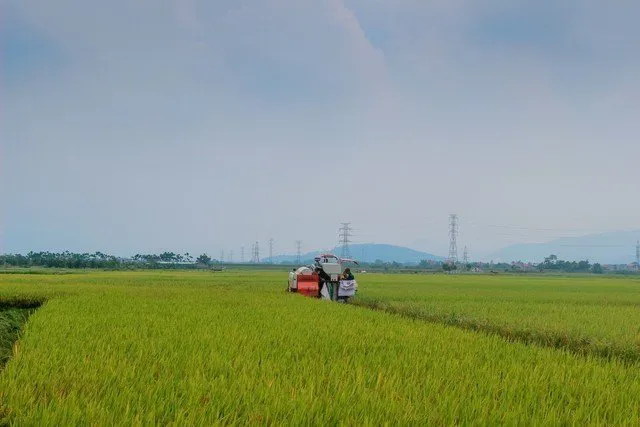Hanoi’s outlying districts change facelift since territorial merger
The economic structure of Hanoi's suburban district has changed for the better.
Hanoi's new-style rural construction program has made many breakthroughs in the 15 years since its boundary adjustment.
An important highlight is the road system with many thoroughfares connecting suburban districts. At the end of 2022, Hanoi started upgrading and renovating National Highway 6, meeting people's expectations for many years.
In addition, the power grid, schools and health stations in communes across the city's rural area have been built and upgraded, contributing to changing the face of the countryside and improving the quality of life of people in rural areas.
Over the course of 15 years, Chuong My District, about 20 kilometers southwest of central Hanoi, has also made remarkable breakthroughs.
Chuong My district has really changed for the better after 15 years. Photo: Thien Tam |
The district has been part of the capital Hanoi since August 2008. As a district with large land and water resources, diverse terrain, abundant labor, and many traditional handicraft villages, Chuong My has turned difficulties into opportunities for development.
According to Tong Van Thai, Head of Chuong My District's Economic Section, all 30 communes in the district have met the new-style rural standards and have been recognized by the Vietnamese government. By the end of 2022, the district had five communes that meet the advanced new-style rural standards.
"Thanks to the success of the new-style rural program, Chuong My District has received a new facelift with well-built infrastructure. The district has seriously considered investing in building and upgrading cultural facilities in the communes. At present, 189/208 villages have cultural houses and 124 have sports facilities in residential groups," Thai said.
He stressed that the district's economy grew strongly in 2022, reaching 11.9%, the highest in recent years and exceeding the target. The economic structure changed in a positive direction, with industry accounting for 57.6%, services 27.1%, and agriculture 15.3%. The total budget revenue of the district reached nearly VND8 trillion (US$336 million). This has confirmed the strong resilience of the district after 15 years of adjusting the administrative boundaries.
"The per capita income of people in Chuong My District increased to VND68.5 million ($2,883) in 2022 from VND8.8 million ($370) in 2008, the figure is estimated to reach VND74 million ($3,114) in 2023. The poverty rate is expected to drop from 16.33% in 2008 to less than 01% in 2023," Thai told local media.
After 15 years of administrative boundary adjustment, Hanoi's agriculture has seen many high-quality production facilities grow. Photo: Thien Tam |
Similar to Chuong My, a poor district on the outskirts of Hanoi, Phu Xuyen District, about 30 kilometers south of the city center, has achieved the new-style rural goal and continues to develop.
"So far, Phu Xuyen District has completed 100% of the inter-communal road system for greater convenience of people's traveling. The school system and teaching equipment have been improved; the district has 56/88 schools that meet the national standard," said Le Tien Xuan, Head of the economic department of Phu Xuyen District.
He added that the district's economic structure has shifted in a positive direction, with the proportion of agriculture decreasing and that of industry, handicrafts, trade and services increasing. By the end of 2020, industry accounted for 55.93%, trade-service 29.1%, agriculture, forestry and fishery 15.6% of the local economic structure. In 2020, the total local budget revenue reached more than VND7 trillion (about $295 million), up 13.3 times compared to 2010.
On the other hand, Phu Xuyen District is home to 43 traditional handicraft villages, 546 enterprises and 17,600 production units in the industrial sector and handicraft villages. Three industrial clusters have been established in the district, with Dai Thang and Phu Tuc being the typical ones.
"Thanks to the focus on comprehensive economic development, the total production value in Phu Xuyen District reached VND6.6 trillion (over $277 million) in the first six months of 2023, an increase of 6.1% year-on-year," Xuan told local media.
He stressed that thanks to the new-style rural construction program, the living standard of the people in Phu Xuyen has been steadily improving. The average income is more than VND55 million ($2,315)/person/year; the percentage of health insurance coverage has reached 90.2%; 100% of residents have access to clean water; and domestic waste is always collected and disposed of within a day.












